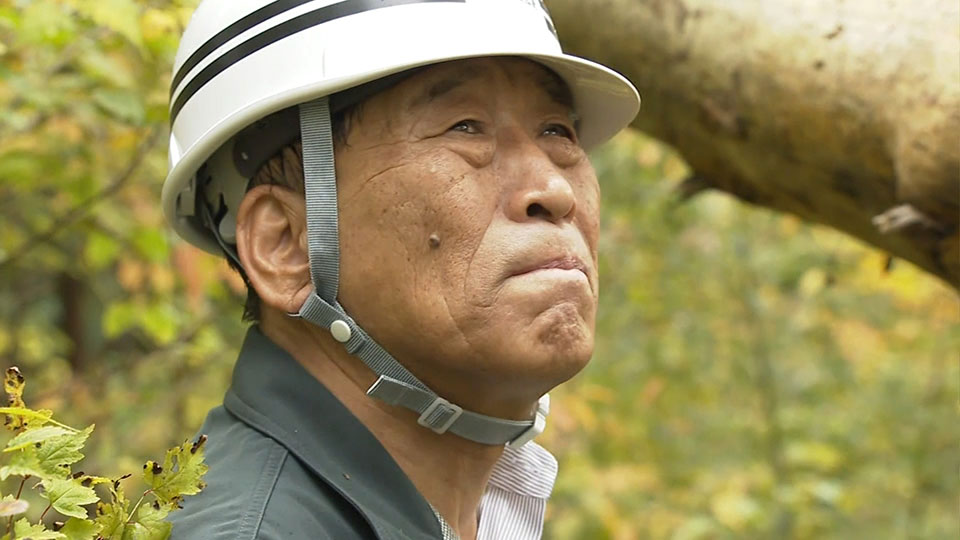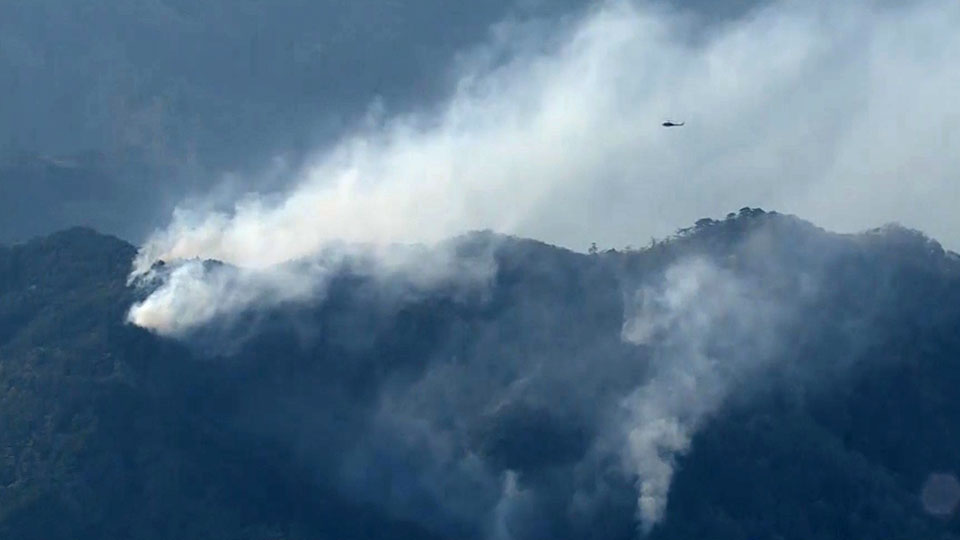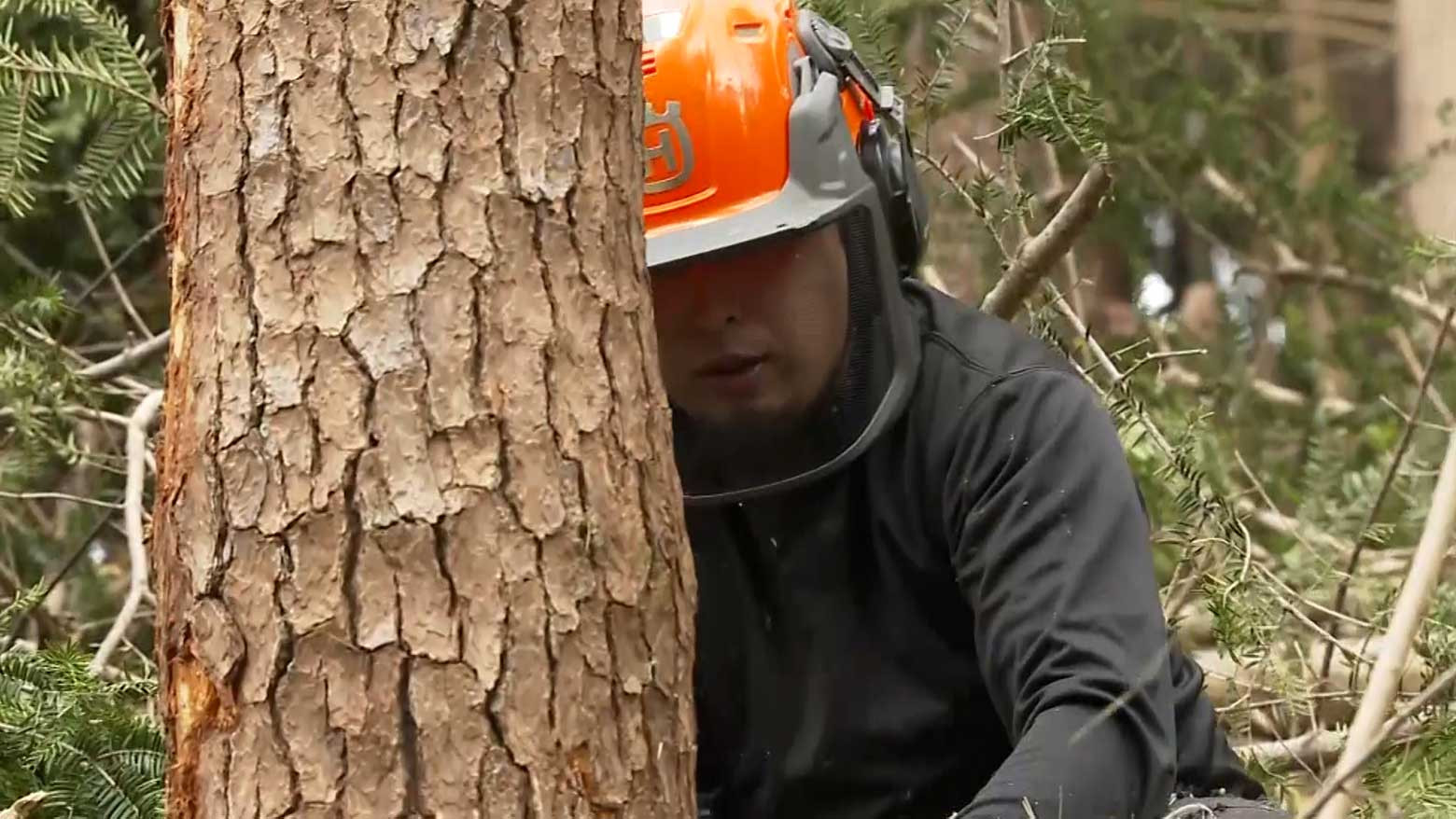“It’s regrettable. I didn’t even imagine things were so bad,” says forester Akimoto Kimio, who visited a plantation in Tomioka, about 10 kilometers away from the crippled Fukushima Daiichi nuclear power plant. Ever since an earthquake and tsunami triggered a triple meltdown at the facility, the forest has been abandoned. Some of its most prized pine trees, more than 50 years old, have died.
Akimoto, 72, heads a local forestry cooperative that was relocated elsewhere in the prefecture following the nuclear accident. But after nine years and eight months, it returned to Tomioka on November 4.

The forestry cooperative ships timber and manages maintenance, such as thinning out trees. Akimoto oversees about 2,000 hectares, 60 percent of which is in areas subject to an evacuation order due to high radiation levels.
His cooperative used to have 20 workers. At one point, the number dwindled to just two. Akimoto has worked hard to keep it afloat, negotiating with the central government and plant operator Tokyo Electric Power Company on decontamination work and compensation. He believes forest preservation will one day help to ensure evacuated residents can return.
Unattended areas of woodland can pose various risks, including fires. A contaminated forest would be particularly hazardous in the event of a landslide, because the mud flow is likely to contain radioactive substances.

“Our mission is to take good care of our hometown forests and enhance the surrounding environment,” says Akimoto on the day his cooperative returned to Tomioka.
“We will help lay the groundwork to ensure residents can return worry-free. We hope many will come home.”

